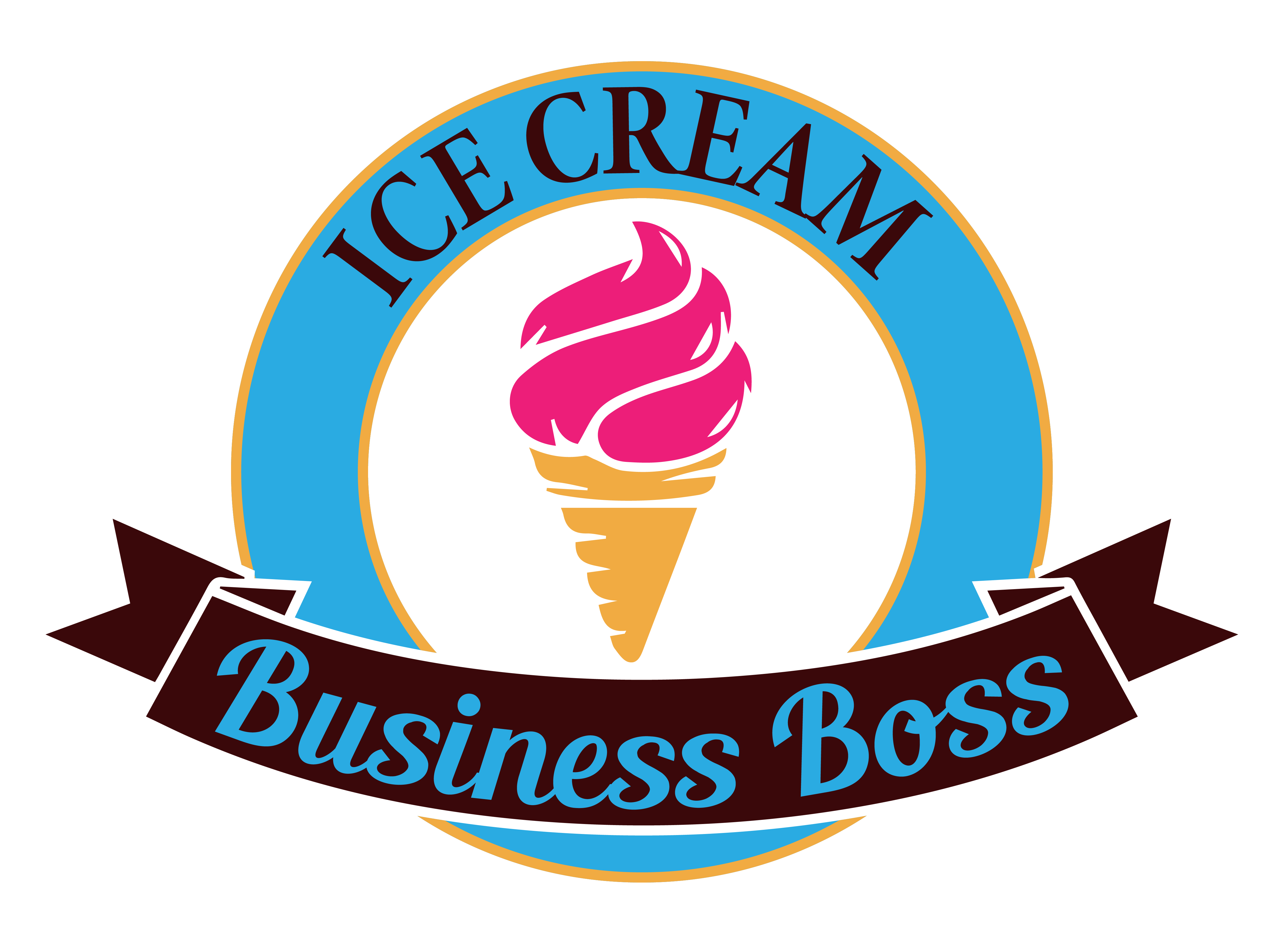The emergence of in-home ice cream firms in recent years has enabled ardent dessert connoisseurs to transform their culinary skills into gainful ventures. The appeal is enhanced by the enticement of creating personalized flavors, the delight of seeing satisfied smiles, and the independence of working from home. But make no mistake: launching an in-home ice cream business entails more than just making your favorite flavor. It necessitates a strategic blend of innovation, entrepreneurship, and tenacity.
To start an in-home ice cream business, first, you should create a business plan, obtain necessary permits, set up a home kitchen, source quality ingredients, develop unique flavors, create a pricing strategy, market online, and ensure compliance with health and safety regulations.
In this article, we’ll walk you through the exciting process of beginning your own in-home ice cream business. So, whether you’re an experienced home cook trying to turn your passion for ice cream into a business or a beginner in the frozen dessert world, take a spoon and prepare to dive into the world of in-house ice cream entrepreneurship.
Creating a Business Plan
Establishing a thorough business plan is essential before starting the process of making your first delicious scoop of ice cream. This founding document will serve as the cornerstone of your at-home ice cream business and provide you with a clear path through every aspect of your operation.
Establish your mission, vision, and goals first. This first stage will establish the tone for your company and give you a clear idea of what you’re trying to accomplish. Then, carefully consider your target market, evaluate your rivals, and identify your unique selling points. In a cutthroat market, knowing your expertise and what makes you unique is essential.
Check your company’s finances in depth. Establish a smart pricing plan, accurately calculate your initial expenditures, and forecast your financial future. A solid business plan serves as a useful tool for obtaining funds in addition to crystallizing your goals. Lenders and investors will respect your vision and dedication to a methodical approach.
Obtaining Necessary Permits

Even a pleasurable venture like an at-home ice cream shop requires negotiating a maze of permits and licenses to get started. This procedure is essential to assuring the safety and legitimacy of your business.
Consult with the zoning and health departments in your area as a first step. Your required permits and licenses are determined by their regulations, which can differ greatly depending on where you are. You might require a home occupation permit, a food handler’s permit, or even a commercial kitchen license, depending on the laws in your area.
In addition to ensuring legal compliance, obtaining these licenses will protect your customers’ health and well-being. Health authorities impose strict regulations to ensure that food products, like ice cream, are prepared and handled in a sanitary manner. Zoning officials make sure that the character of your community isn’t harmed by your home-based business.
Check out this article to learn more about starting your own ice cream store business.
Setting Up a Home Kitchen
Your kitchen is the beating center of your business in the ice cream industry, where the magic happens. Your kitchen must be both a place for culinary delights and a well-equipped haven that complies with strict health and safety regulations if you want to ensure the profitability and safety of your at-home ice cream business.
It is crucial to spend money on high-quality appliances. You can count on high-quality freezers and ice cream makers to accompany you on your frozen adventure. In addition to producing excellent ice cream, these machines need also be hygienic enough to produce food.
Set up a specific area in your kitchen for packing and storing ingredients. This guarantees that your final products are treated with care and that your raw materials are maintained in the best possible conditions. To avoid cross-contamination and sustain the highest levels of hygiene, it is essential to keep a spotless and orderly environment.
Your ice cream-producing procedures must be effective. Create a well-planned batch schedule to increase output while preserving product quality. Organize your ingredients with an inventory management system to make sure you never run out of the necessary components for your delicious creations.
Sourcing Quality Ingredients
The selection of ingredients is key to making truly great ice cream. The raw ingredients you choose have a significant impact on the flavor, consistency, and overall quality of your ice cream. Prioritize high-quality dairy products, fresh, ripe fruits, and premium flavorings to produce a product that enchants taste sensations.
Consider using organic and locally sourced ingredients in your recipes in this age of health-conscious consumers looking for nutritious options. These options support sustainability and community involvement in addition to appealing to clients who are environmentally and health-conscious, giving your brand an additional layer of appeal.
It is crucial to establish strong bonds with dependable suppliers. In the ice cream industry, consistency is essential, and having a consistent supply of premium ingredients makes sure that each batch of ice cream reaches your high standards.
Don’t be hesitant to try new ingredients and taste combinations to stand out in the crowded ice cream industry. The secret to winning over the hearts (and palates) of discerning customers is frequent innovation. Create a wide variety of flavors for your ice cream that make it stand out, ranging from traditional favorites to cutting-edge concoctions that pique interest and pleasure.
Developing Unique Flavors

The ability to create distinctive and mouthwatering tastes is a skill that can take your ice cream business to new heights in the world of ice cream crafting. Start with the traditional tastes as your base, such as vanilla, chocolate, and various fruit flavors, to begin this delicious trip. These classics offer a strong foundation on which to unleash your creativity.
However, stretching the limits of flavor is where the real magic happens. Encourage yourself to think beyond the box and create uncommon combinations that will excite the taste buds of your clients. Include intriguing toppings, such as handmade cookie bits or caramel swirls, to give each scoop a unique flavor and texture.
Don’t overlook the value of feedback. Encourage friends and family to participate in taste tests and to offer their honest thoughts. These priceless tips will enable you to improve your recipes and guarantee that your ice cream selections are nothing less than spectacular.
Consider providing seasonal flavors and limited-edition concoctions to keep the excitement high and encourage client loyalty. These exclusive offerings create a sense of exclusivity and expectation, which promotes repeat business and word-of-mouth referrals.
Creating a Pricing Strategy
Creating a thoughtful pricing strategy is essential for guaranteeing profitability and long-term sustainability in the ice cream industry. Several things need to be carefully considered before starting this adventure.
Look closely at your production expenses first. Analyze the costs involved with obtaining top-notch equipment, obtaining premium ingredients, and upholding the highest standards of quality. Your pricing structure can be strongly impacted by the quality of your ingredients and their suppliers, including whether they are organic or locally produced.
Take into account overhead expenditures in addition to production costs. These include costs for utility bills, packaging, and marketing initiatives. Each component adds to the overall price of distributing your delicious ice cream creations.
The state of the market is key in determining your prices. Consider the special value your brand delivers when you determine the willingness of your target market to pay for your ice cream. To make sure your prices are reasonable and accurately reflect the high caliber and uniqueness of your offering, research the pricing of your rivals.
You can choose from several pricing models, such as cost-plus pricing, which adds a markup to your manufacturing expenses, or value-based pricing, which bases prices on the ice cream’s perceived value. Selecting the best model depends on your market positioning and strategy. Each model offers advantages. Be on the lookout for seasonal changes in demand as well. To maximize revenue generation and take advantage of peak times, adjust your prices accordingly.
Planning to open an ice cream stand business? Check out our article to help you get started.
Marketing Online
Cultivating a strong online presence is not just a choice in the fast-paced digital landscape of today’s business world; it is a requirement, particularly for an ice cream firm striving to succeed. Here are some tips for maximizing the digital era:
Create a quality website to serve as the online representation of your ice cream company to begin with. Your website should highlight your delectable ice cream selections, share your brand’s history, and offer the necessary contact details. This internet gateway turns into a digital storefront that welcomes and gives potential customers a taste of what you have to offer.
Utilize the strength of social media sites like Twitter, Facebook, and Instagram. To keep your brand in the spotlight, post mouthwatering images of your exquisite goods, interact with your audience through comments and messages and launch smart advertising campaigns. These platforms provide a vibrant setting for cultivating a following of devoted customers and promoting your delicious ice cream.
By providing online ordering and delivery services, you might want to expand your internet presence. Because of this ease, you may reach a wider audience and appeal to individuals who like to eat their ice cream at home. This convenience can greatly increase your reach.
Encourage customer evaluations and testimonials on your website and social media sites to build credibility and trust. Strong social evidence comes from the positive testimonials of happy clients, which encourages prospective customers to select your ice cream with confidence.
Ensuring Compliance with Health and Safety Regulations

The greatest levels of food safety and cleanliness must always be upheld when it comes to the ice cream industry. Here’s how to make sure your activities satisfy these important needs and go above and beyond:
- Start by strictly following recommended methods for handling, storing, and preparing food. This entails thorough hand cleaning, storing ingredients properly at the proper temperatures, and preventing cross-contamination between raw and cooked foods.
- Maintaining the quality of your ice cream and preventing the growth of hazardous bacteria on your kitchen equipment requires routine examination and cleaning. To ensure the security of your products, cleanliness, and sanitation should be a constant activity.
- Your ice cream items must have accurate labels. To educate clients about dietary restrictions or allergies, ingredient lists, and allergen information should be made explicit. This openness protects the health of your clients while also enhancing consumer confidence in your company.
- Put safe food handling practices into place to further avoid contamination. This involves using different cutting boards for various food groups, employing the right cooking and cooling methods, and routinely checking the temperature of the products being produced.
- Keep up with the most recent rules and standards from the health department. Maintaining your ice cream shop’s compliance with legal regulations depends on staying current. Be ready for inspections as they are conducted to evaluate your compliance and uphold the security of your operations and products.
Frequently Asked Questions
How much does it cost to start an ice cream business at home?
The cost of starting an in-home ice cream business varies depending on factors such as location, equipment, and scale. Budget for equipment (ice cream maker, freezer, etc.), ingredients, permits/licenses, marketing, and branding, on average. The initial investment can range from a few thousand dollars to several tens of thousands of dollars. A detailed business strategy will assist you in estimating your specific beginning costs.
Can I start an ice cream shop without a commercial kitchen?
It is possible to run an in-home ice cream business without a professional kitchen in many areas, but you must still follow health and safety laws. You can turn a section of your kitchen into a specialized workshop that meets local food safety standards. If your budget allows, consider renting a professional kitchen facility. Make careful you investigate and follow your local restrictions.
What are some good web marketing techniques for my at-home ice cream shop?
Reaching a larger audience requires the use of online marketing. Begin by developing an engaging website that showcases your ice cream and your story. Use social media channels such as Instagram and Facebook to share delectable photographs, interact with customers, and run promotions.
To broaden your reach, consider using food delivery apps. Encourage consumer feedback and testimonials to help you develop trust. Email marketing and working with local influencers can also be effective tactics for increasing your internet presence and attracting clients.
The information provided by IceCreamBusinessBoss.com (“The Site”) is for general informational purposes only. All information on the Site is provided in good faith, however, we make no representation or warranty of any kind, express or implied, regarding the accuracy, adequacy, validity, reliability, availability, or completeness of any information on the Site. Under no circumstance shall we have any liability to you for any loss or damage of any kind incurred as a result of the use of the Site or Reliance on any information provided on the Site. Your use of the Site and your reliance on any information on the Site is solely at your own risk. This blog post is for educational purposes only and does not constitute legal advice. Please consult a legal expert to address your specific needs. Terms and Conditions.

Hi! I am Shawn and I am a happy individual who happens to be an entrepreneur. I have owned several types of businesses in my life from a coffee shop to an import and export business to an online review business plus a few more and now I create online ice cream/gelato business resources for those interested in starting new ventures. It’s demanding work but I love it. I do it for those passionate about their business and their goals. That’s why when I meet a ice cream/gelato business owner, I see myself. I know how hard the struggle is to retain clients, find good employees and keep the business growing all while trying to stay competitive.
That’s why I created Ice Cream Business Boss: I want to help ice cream and gelato business owners like you build a thriving business that brings you endless joy and supports your ideal lifestyle.

